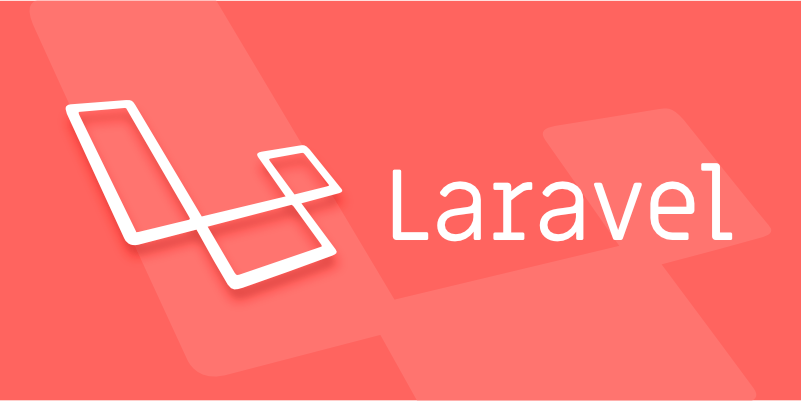Laravel Dusk is ideal for browser automation testing in Laravel apps. 1. Install via Composer with composer require --dev laravel/dusk. 2. Set up using php artisan dusk:install to generate test files. 3. Write tests simulating user actions like login, visit, type, and assertPathIs. 4. Use page objects, handle authentication with loginAs(), and adjust timeouts as needed. 5. Run specific tests or capture screenshots on failure. Avoid Dusk for large-scale or API-only testing where tools like Cypress or Laravel’s HTTP tests are better suited.

Laravel Dusk is a great tool for browser automation testing, especially if you're already working within a Laravel application. It’s simple to set up, integrates well with Laravel, and allows you to write tests that simulate real user interactions in the browser.

Unlike other testing tools that require installing external dependencies like Selenium, Dusk uses ChromeDriver by default, so it's lightweight and easy to get running quickly.

How to Install and Set Up Laravel Dusk
To start using Dusk, you just need to pull it in via Composer:
composer require --dev laravel/dusk
Then run the install command:

php artisan dusk:install
This creates a Browser directory inside Tests, where your test classes will go. You’ll also find a base test class (DuskTestCase.php) that sets up the browser session and handles things like logging in or visiting pages.
Make sure your .env file doesn’t point to a production database — Dusk runs in the testing environment but still interacts with real databases, so always use a dedicated testing DB.
Writing Your First Browser Test
Dusk tests are written as PHP classes that extend Laravel\Dusk\Browser. Each method starting with test will be executed as a separate test case.
Here’s a basic example of logging into a site and checking for an element:
public function test_user_can_login()
{
$this->browse(function (Browser $browser) {
$browser->visit('/login')
->type('email', 'test@example.com')
->type('password', 'password')
->press('Login')
->assertPathIs('/dashboard');
});
}You can chain methods like type, click, press, and assertSee to simulate user behavior and make assertions about what should happen next.
If you need to test JavaScript-heavy apps or forms with dynamic content, Dusk handles that smoothly too.
Tips for Organizing and Running Tests
- Use page objects to keep your tests clean. If you have reusable components or flows (like login, navigation menus), extract them into Page classes.
- Run specific tests during development with
php artisan dusk Tests/Browser/YourTest.php. - Take screenshots on failure — Dusk makes this easy. Just add
$browser->screenshot('error')inside a catch block or after a failed assertion. - Handle authentication by using
loginAs()helper to skip login steps in most tests:$browser->loginAs(User::find(1))
Also, don’t forget to adjust the timeout settings if you’re dealing with slow-loading pages or APIs:
protected $defaultTimeout = 10; // seconds
When Not to Use Laravel Dusk
While Dusk is powerful, it’s not always the best fit. For very large test suites with hundreds of scenarios, you might want something more scalable like Cypress or Playwright. Those tools offer better parallelization, cloud support, and richer UI features.
Also, if you're doing API-only testing without any frontend interaction, sticking to Laravel’s built-in HTTP tests would be faster and more efficient.
But for most Laravel projects that need solid browser testing, Dusk gets the job done — no extra setup, no headaches.
That’s basically it. It’s straightforward once you get going, and saves a lot of time over manual testing.
The above is the detailed content of Using Laravel Dusk for Browser Automation Testing?. For more information, please follow other related articles on the PHP Chinese website!

Hot AI Tools

Undress AI Tool
Undress images for free

Undresser.AI Undress
AI-powered app for creating realistic nude photos

AI Clothes Remover
Online AI tool for removing clothes from photos.

Clothoff.io
AI clothes remover

Video Face Swap
Swap faces in any video effortlessly with our completely free AI face swap tool!

Hot Article

Hot Tools

Notepad++7.3.1
Easy-to-use and free code editor

SublimeText3 Chinese version
Chinese version, very easy to use

Zend Studio 13.0.1
Powerful PHP integrated development environment

Dreamweaver CS6
Visual web development tools

SublimeText3 Mac version
God-level code editing software (SublimeText3)
 Working with pivot tables in Laravel Many-to-Many relationships
Jul 07, 2025 am 01:06 AM
Working with pivot tables in Laravel Many-to-Many relationships
Jul 07, 2025 am 01:06 AM
ToworkeffectivelywithpivottablesinLaravel,firstaccesspivotdatausingwithPivot()orwithTimestamps(),thenupdateentrieswithupdateExistingPivot(),managerelationshipsviadetach()andsync(),andusecustompivotmodelswhenneeded.1.UsewithPivot()toincludespecificcol
 Sending different types of notifications with Laravel
Jul 06, 2025 am 12:52 AM
Sending different types of notifications with Laravel
Jul 06, 2025 am 12:52 AM
Laravelprovidesacleanandflexiblewaytosendnotificationsviamultiplechannelslikeemail,SMS,in-appalerts,andpushnotifications.Youdefinenotificationchannelsinthevia()methodofanotificationclass,andimplementspecificmethodsliketoMail(),toDatabase(),ortoVonage
 Understanding Dependency Injection in Laravel?
Jul 05, 2025 am 02:01 AM
Understanding Dependency Injection in Laravel?
Jul 05, 2025 am 02:01 AM
Dependency injection automatically handles class dependencies through service containers in Laravel without manual new objects. Its core is constructor injection and method injection, such as automatically passing in the Request instance in the controller. Laravel parses dependencies through type prompts and recursively creates the required objects. The binding interface and implementation can be used by the service provider to use the bind method, or singleton to bind a singleton. When using it, you need to ensure type prompts, avoid constructor complications, use context bindings with caution, and understand automatic parsing rules. Mastering these can improve code flexibility and maintenance.
 Strategies for optimizing Laravel application performance
Jul 09, 2025 am 03:00 AM
Strategies for optimizing Laravel application performance
Jul 09, 2025 am 03:00 AM
Laravel performance optimization can improve application efficiency through four core directions. 1. Use the cache mechanism to reduce duplicate queries, store infrequently changing data through Cache::remember() and other methods to reduce database access frequency; 2. Optimize database from the model to query statements, avoid N 1 queries, specifying field queries, adding indexes, paging processing and reading and writing separation, and reduce bottlenecks; 3. Use time-consuming operations such as email sending and file exporting to queue asynchronous processing, use Supervisor to manage workers and set up retry mechanisms; 4. Use middleware and service providers reasonably to avoid complex logic and unnecessary initialization code, and delay loading of services to improve startup efficiency.
 Managing database state for testing in Laravel
Jul 13, 2025 am 03:08 AM
Managing database state for testing in Laravel
Jul 13, 2025 am 03:08 AM
Methods to manage database state in Laravel tests include using RefreshDatabase, selective seeding of data, careful use of transactions, and manual cleaning if necessary. 1. Use RefreshDatabasetrait to automatically migrate the database structure to ensure that each test is based on a clean database; 2. Use specific seeds to fill the necessary data and generate dynamic data in combination with the model factory; 3. Use DatabaseTransactionstrait to roll back the test changes, but pay attention to its limitations; 4. Manually truncate the table or reseed the database when it cannot be automatically cleaned. These methods are flexibly selected according to the type of test and environment to ensure the reliability and efficiency of the test.
 Choosing between Laravel Sanctum and Passport for API authentication
Jul 14, 2025 am 02:35 AM
Choosing between Laravel Sanctum and Passport for API authentication
Jul 14, 2025 am 02:35 AM
LaravelSanctum is suitable for simple, lightweight API certifications such as SPA or mobile applications, while Passport is suitable for scenarios where full OAuth2 functionality is required. 1. Sanctum provides token-based authentication, suitable for first-party clients; 2. Passport supports complex processes such as authorization codes and client credentials, suitable for third-party developers to access; 3. Sanctum installation and configuration are simpler and maintenance costs are low; 4. Passport functions are comprehensive but configuration is complex, suitable for platforms that require fine permission control. When selecting, you should determine whether the OAuth2 feature is required based on the project requirements.
 Implementing Database Transactions in Laravel?
Jul 08, 2025 am 01:02 AM
Implementing Database Transactions in Laravel?
Jul 08, 2025 am 01:02 AM
Laravel simplifies database transaction processing with built-in support. 1. Use the DB::transaction() method to automatically commit or rollback operations to ensure data integrity; 2. Support nested transactions and implement them through savepoints, but it is usually recommended to use a single transaction wrapper to avoid complexity; 3. Provide manual control methods such as beginTransaction(), commit() and rollBack(), suitable for scenarios that require more flexible processing; 4. Best practices include keeping transactions short, only using them when necessary, testing failures, and recording rollback information. Rationally choosing transaction management methods can help improve application reliability and performance.
 Handling HTTP Requests and Responses in Laravel.
Jul 16, 2025 am 03:21 AM
Handling HTTP Requests and Responses in Laravel.
Jul 16, 2025 am 03:21 AM
The core of handling HTTP requests and responses in Laravel is to master the acquisition of request data, response return and file upload. 1. When receiving request data, you can inject the Request instance through type prompts and use input() or magic methods to obtain fields, and combine validate() or form request classes for verification; 2. Return response supports strings, views, JSON, responses with status codes and headers and redirect operations; 3. When processing file uploads, you need to use the file() method and store() to store files. Before uploading, you should verify the file type and size, and the storage path can be saved to the database.






